This Showboating Bird’s Striking Presence Is Further Enhanced By A Highly Unique Talent, His Musical Wings!
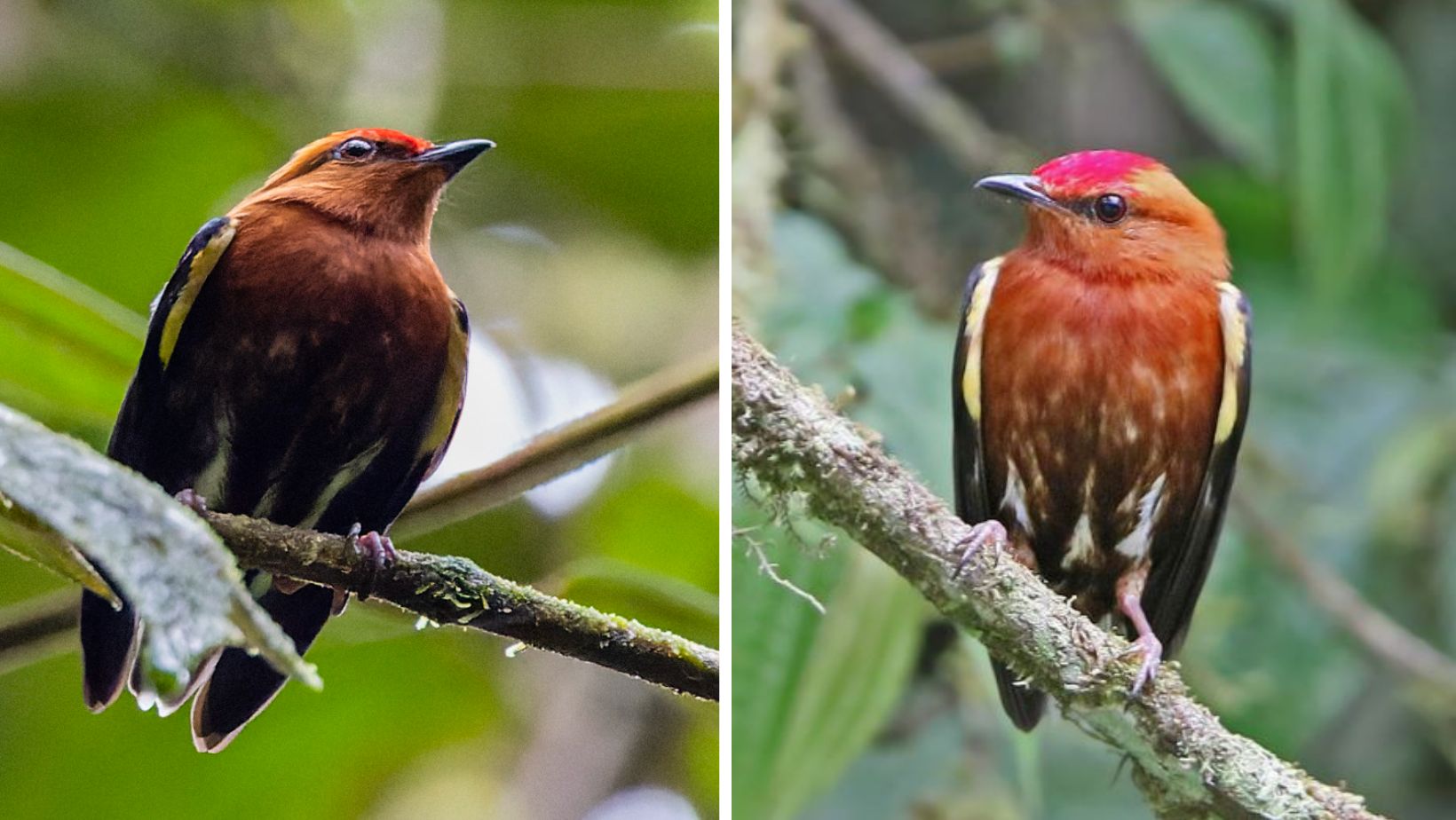
With its wine-red, black, and white plumage, this birds striking presence is unlike any other bird species found in the region.
Meet the Club-winged manakin:
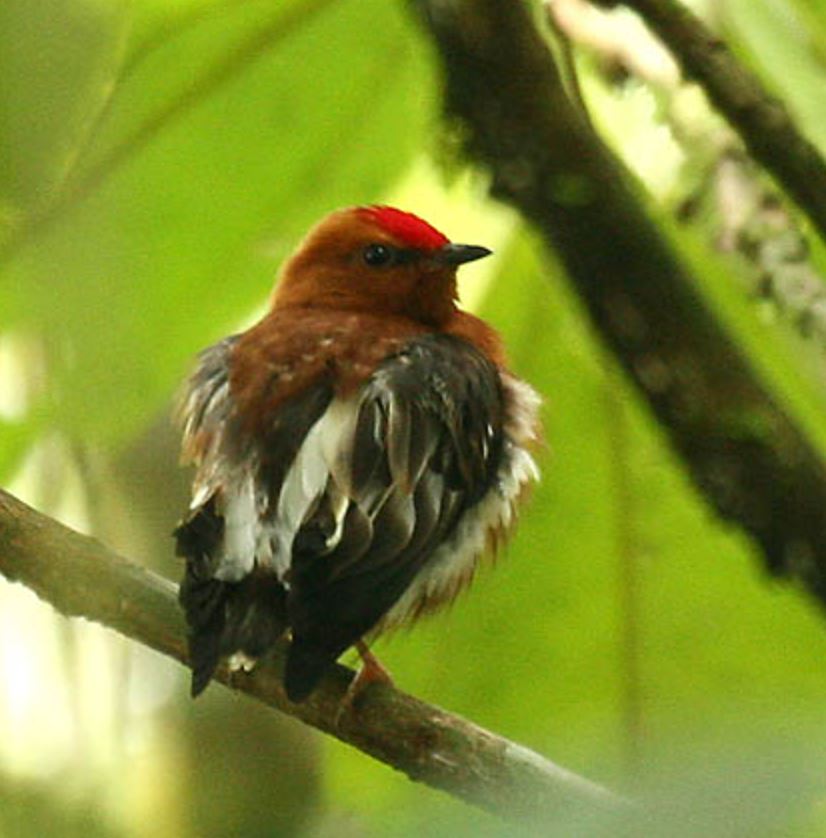
Description: The Club-winged Manakin, scientifically known as Machaeropterus is a species of bird with striking sexual dimorphism. The vibrant males sport brownish-red plumage, highlighted by a bright red crown, and distinctive black and white wings.
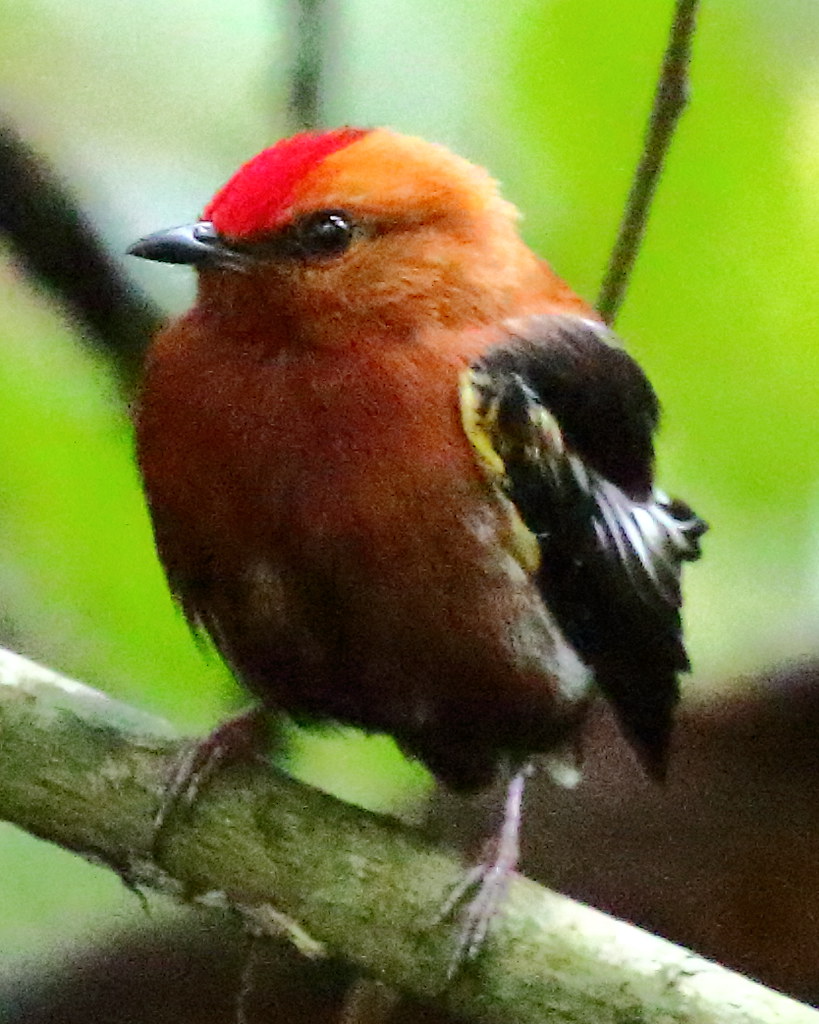
In contrast, the females display a more subdued yellow-green hue.
Related reading:
The juvenile has a yellowish wash to the face and belly.
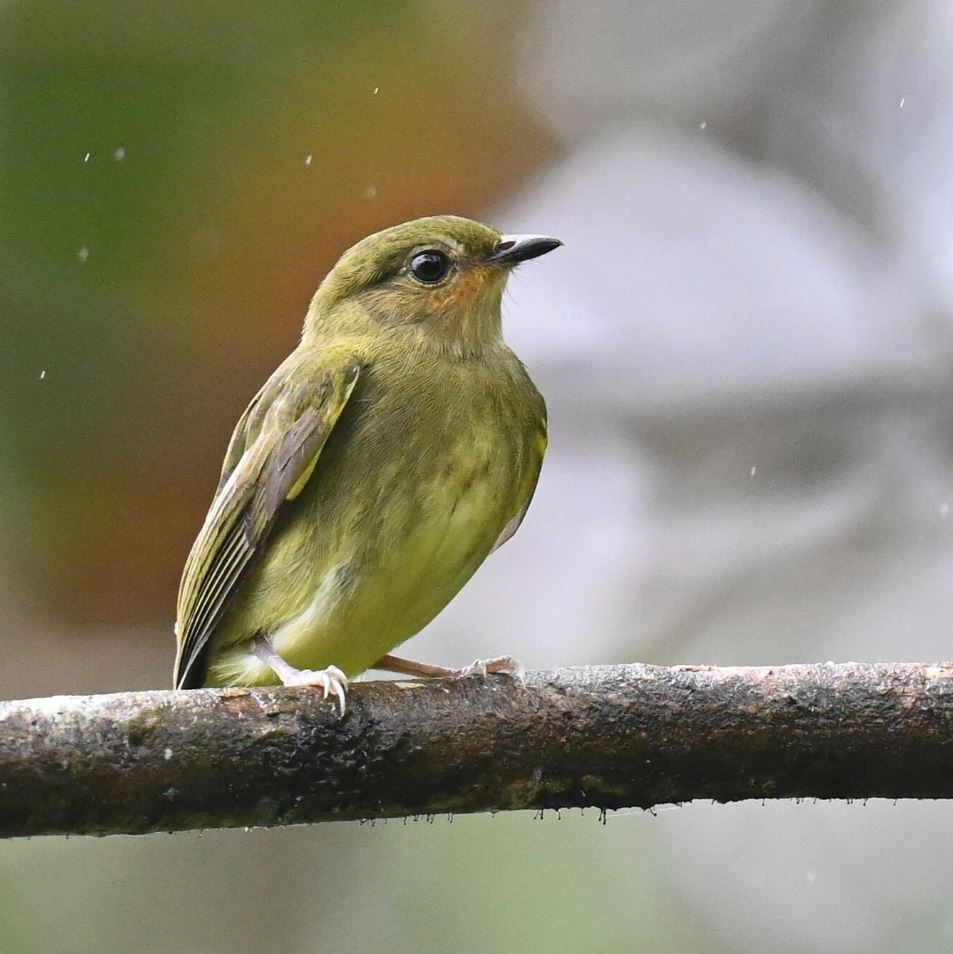
Distribution: These birds reside on the western slopes of the Andes Mountains of Colombia and northwestern Ecuador.
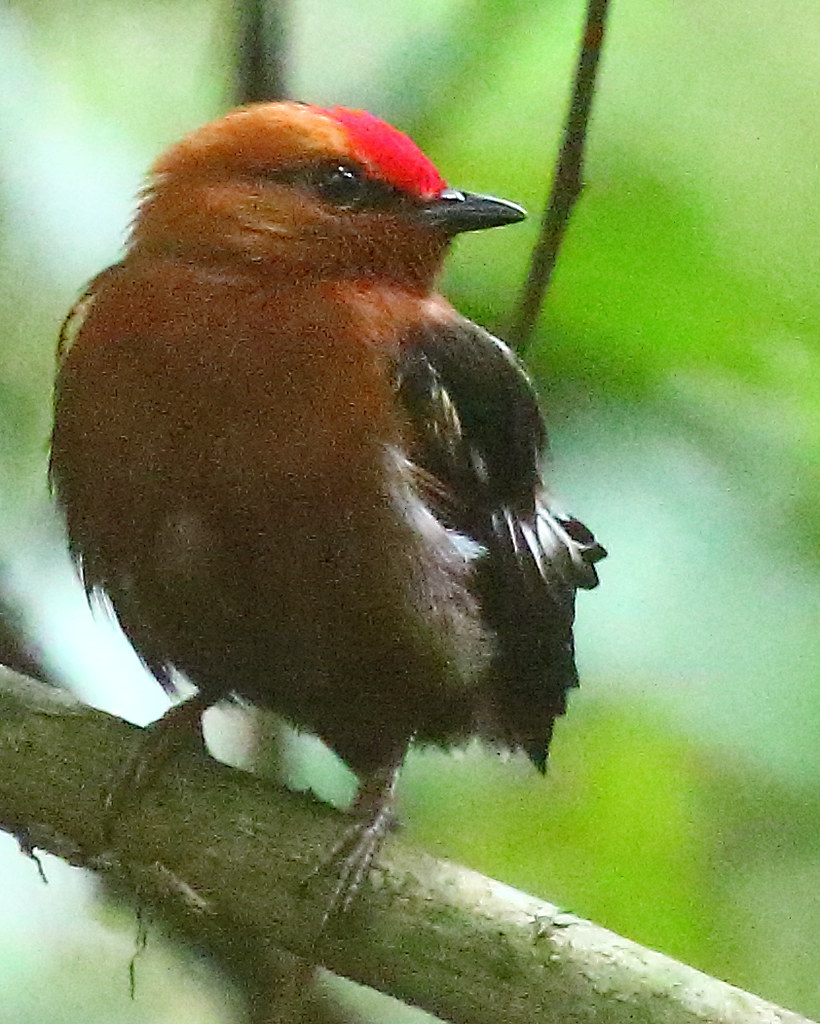
Habitat: Their habitat consists of the lush cloud forests on the western Andes.
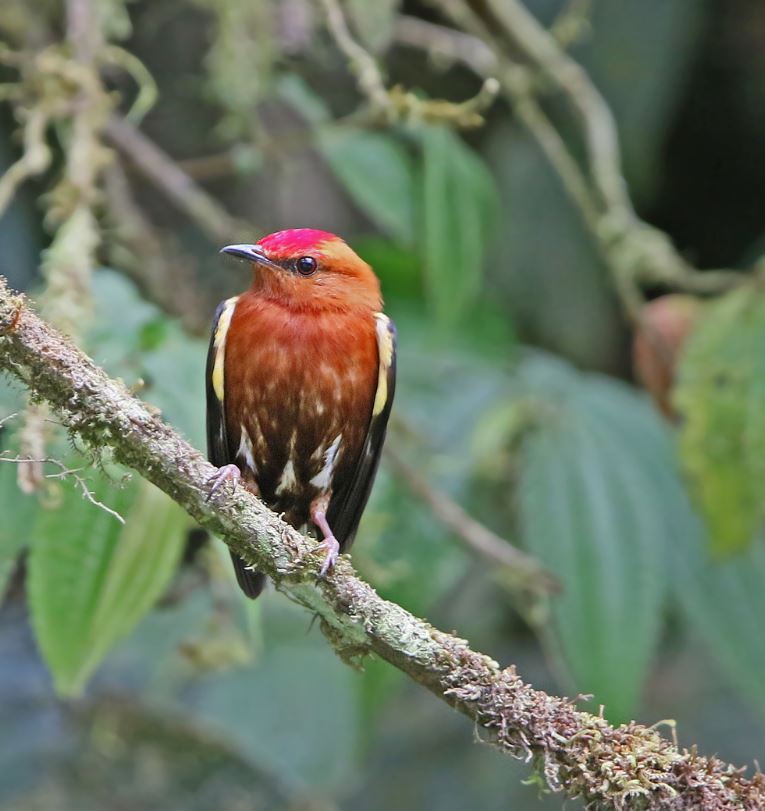
Diet: Feeding primarily on berries within the middle levels of the forest, these manakins engage in a courtship ritual unparalleled by other species.
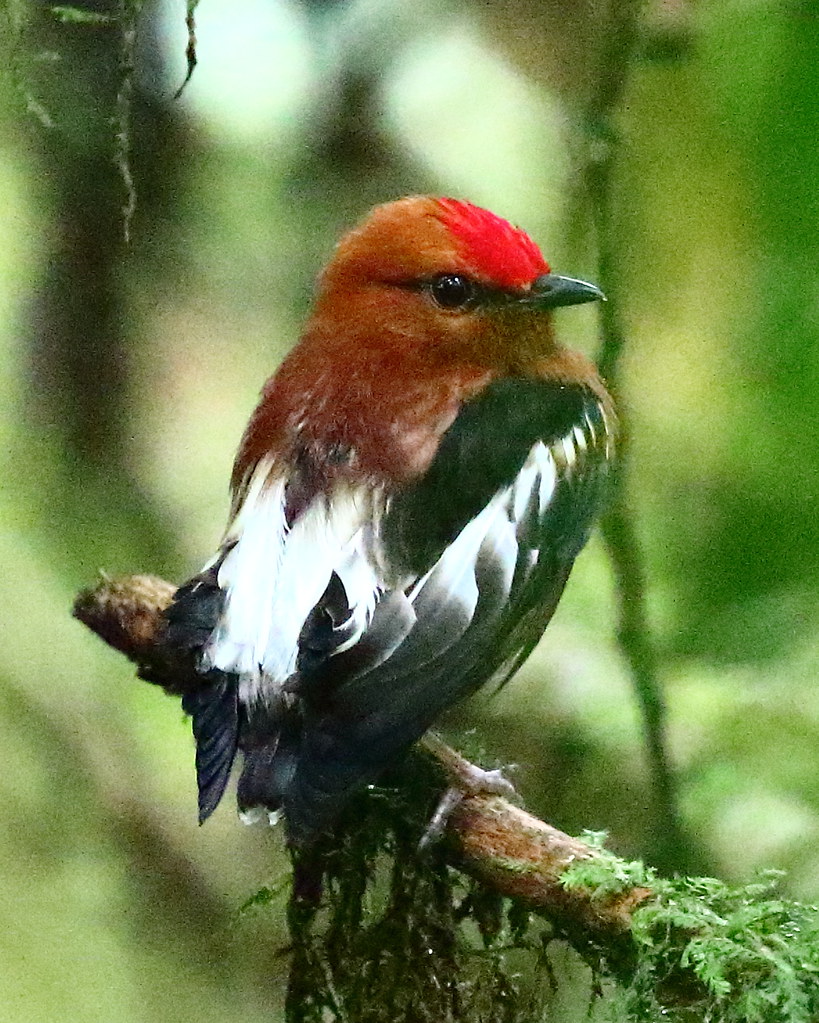
Courtship: Males showcase their unique courtship display by hopping and strutting in neighboring trees, particularly at preferred display sites. They create distinctive sounds by rapidly vibrating their wings, producing loud beeps that echo through the forest canopy. In the world of manakins, females are the elusive visitors to the lek, appearing solely for the purpose of mating. Meanwhile, males dedicate much of their lives to the lek, patiently awaiting the arrival of the next potential mate. Unlike many bird species, manakins do not form pair bonds. Once a female has chosen a favored male and completed the mating ritual, she departs from the lek to construct a cup-shaped nest and independently raise her offspring. This pattern repeats annually, with males remaining on the lek, poised for the next opportunity to impress a passing female.
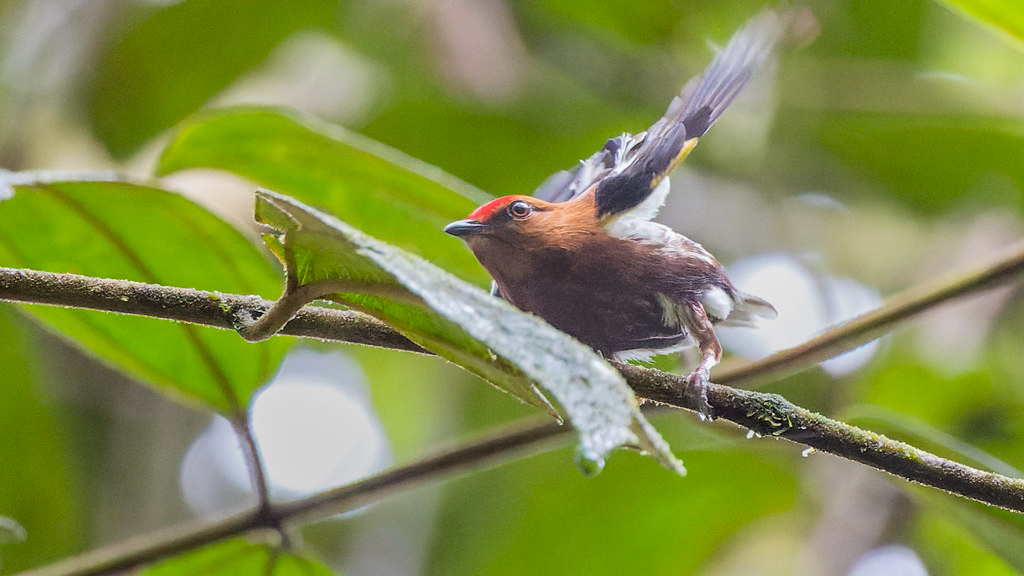
Status: While the exact population size remains uncertain, there are indications that their numbers are currently stable.
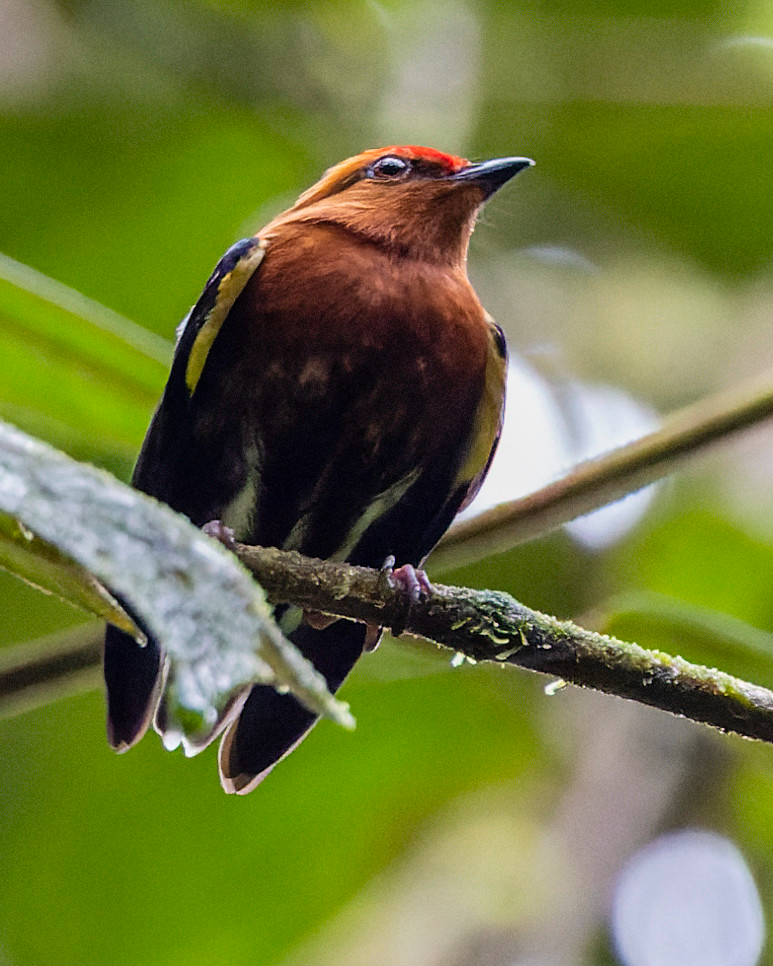
Watch this bird’s amazing dance moves in the video below:
This article uses material from Wikipedia.org which is licensed under the GNU Free Documentation License via Copyright Wikipedia. Images on this page are the sole property of the photographers (unless marked as Public Domain). Please read the license and or contact the photographers directly before using them for any purpose. Thank you all.
A Prominent Black Mask Is Starkly Juxtaposed By Vibrant Yellow And Pristine White Eyeliner!
Please SHARE this article with all your bird-loving friends and family.






